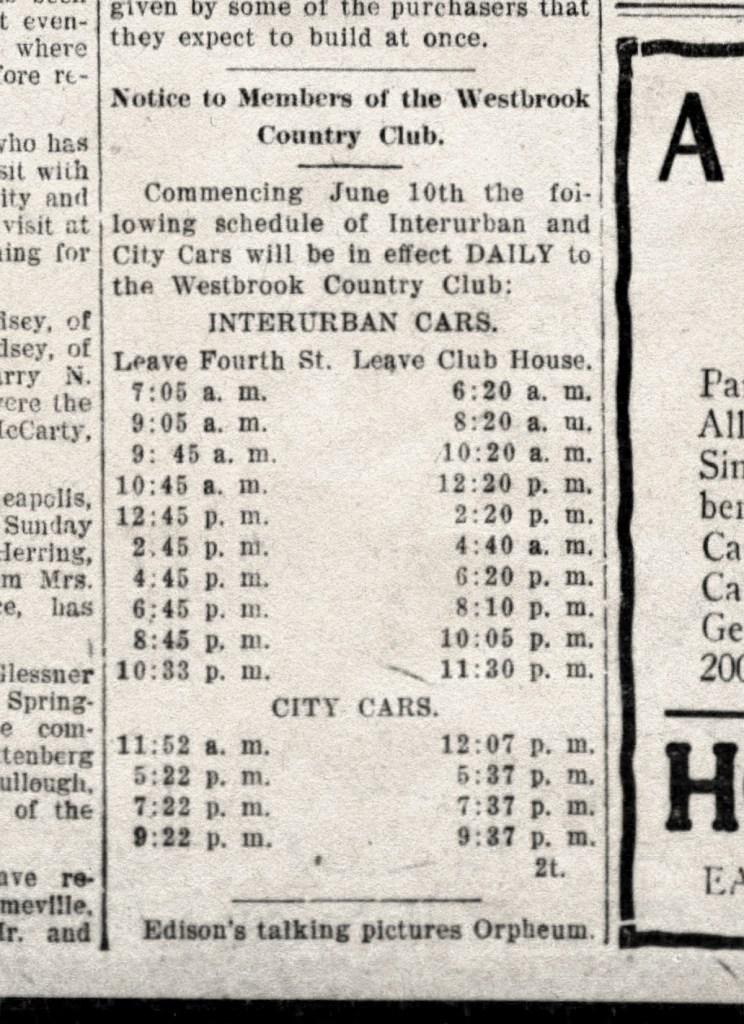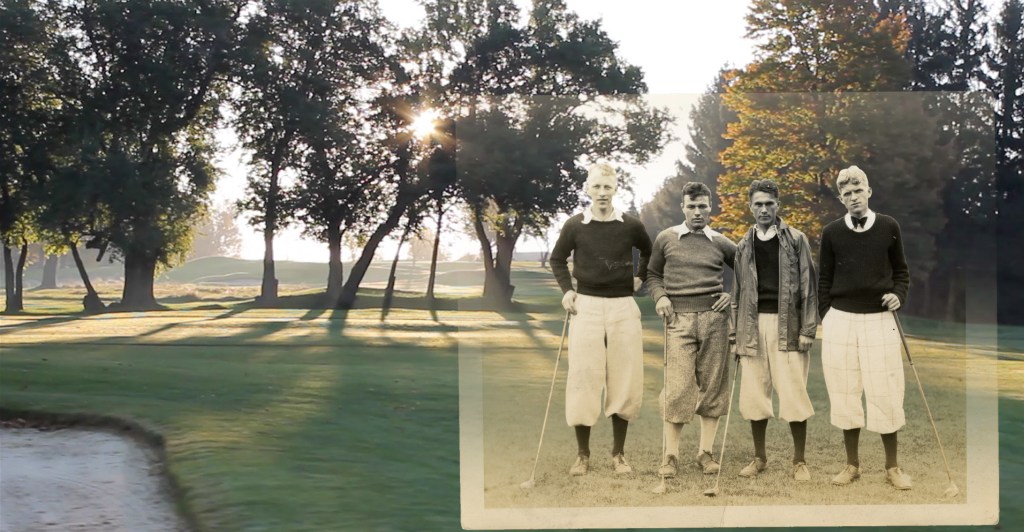
When you go to Westbrook from the center of Mansfield, you’re not going west, and when you get there you won’t find anything like a brook because it is situated up on the top of a hill. In order to understand why that particular name is attached to the most beautiful park in the city, you will need to know a little more of the back story.
The West, The Brook
When Westbrook got started, the game of golf was still a fairly new form of entertainment in America. The US Golf Association was established in 1894, and when the Westbrook Outing Club laid out their first golfing links in 1901, the US Open was only 6 years old.
When Mansfield’s sporting enthusiasts established the initial 9 holes, it was indeed ‘west’ of town—out West Fourth Street in Abe Heineman’s horse paddock. Mr. Heineman generously agreed to pasture his horses in a different swale so the golfers wouldn’t have to dodge road apples, but the paddock fences were still in place. Accordingly, when the course opened it came specially equipped with laddered stiles so gentlemen and ladies could step over the fences with grace.
The ‘brook’ of Westbrook was a healthy little stream known as Toby’s Run that ambled through the northernmost valley of Sherman-Heineman Park. This is the stream that was dammed to create North Lake. Today, if you wander around the North Lake area you will find there is still a Westbrook Avenue that marks one boundary of the old golf course site.

Today the site has several residential streets running through the fairways: Parkway Drive, Rae Avenue, and Helen Avenue.
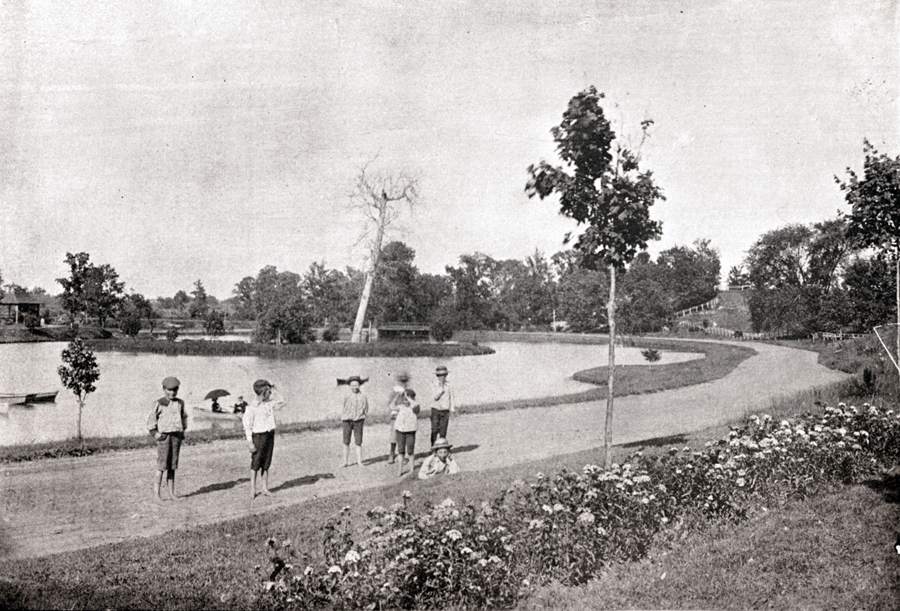

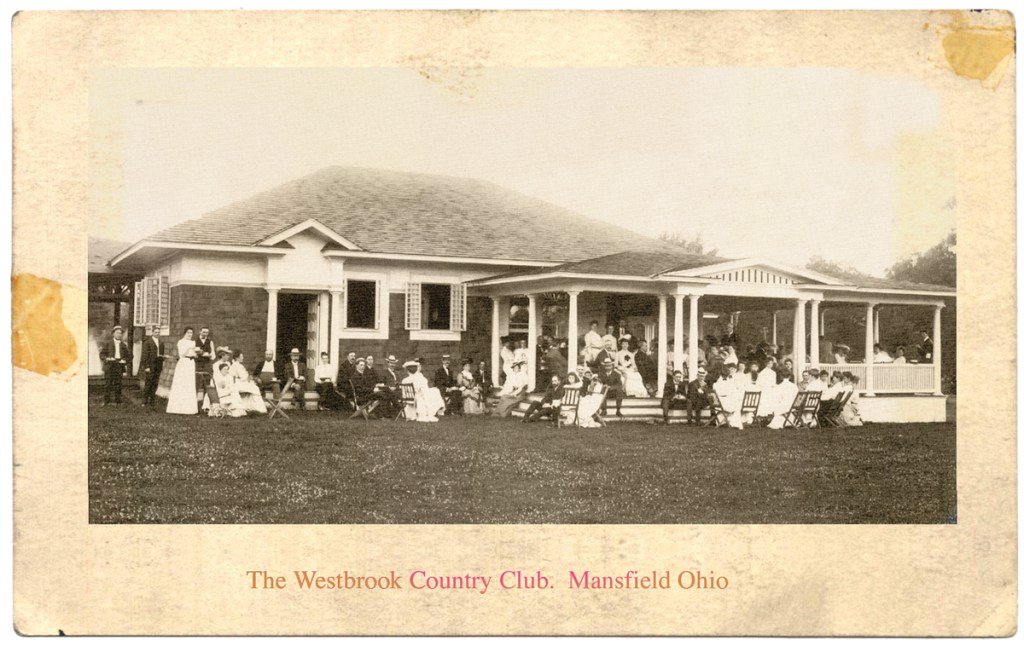
Play it Where it Lies
Where did those early golfers keep their golf clubs? In the Club House. It was built on what is now Rae Avenue overlooking the lake, and was a sturdy enough building that when the Outing Club moved from its Fourth Street location they took the Clubhouse with them.
As soon as the grounds by the lake were in use, there were serious golfers who felt they needed nine more holes to play…and there was simply not enough space for that on the Fourth Street property. In 1906, they transplanted the operation a mile north of there, on 170 acres atop a prominent hill with a lovely view.
The new Westbrook Country Club had a commanding view that required a correspondingly impressive clubhouse, so Mansfield’s most prominent architect, Vernon Redding, drew up a striking country estate.

The Scottish Landscape of Mansfield
As soon as he was available for the job, the leading designer of golf courses in America was brought in to lay out the holes on the new site.
Donald Ross is without peers in the art and history of golf course design in the U.S., and it is with due pride that Mansfield can boast a landscaped park designed by him. His best-known work is at Pinehurst in North Carolina, but there are about 400 more of his courses around the world laid out between 1900 and 1948.
By 1921, when he applied his vision to the Westbrook hill north of town, his work was already clearly established as a distinctive style that golfers still recognize.
Ross was born in Scotland—as was the game of golf itself—and he identified certain aspects of the Scottish landscape as essential elements of any golf course. If you study the coastal terrain of his hometown of Dornoch, it is easy to see the deep, small sand traps, the knobby knolls, and the tilted greens of his designs that occur quite naturally there near the sea. These are the same elements at Westbrook that Ross was able to sculpt into the hilly glacial formation north of town.
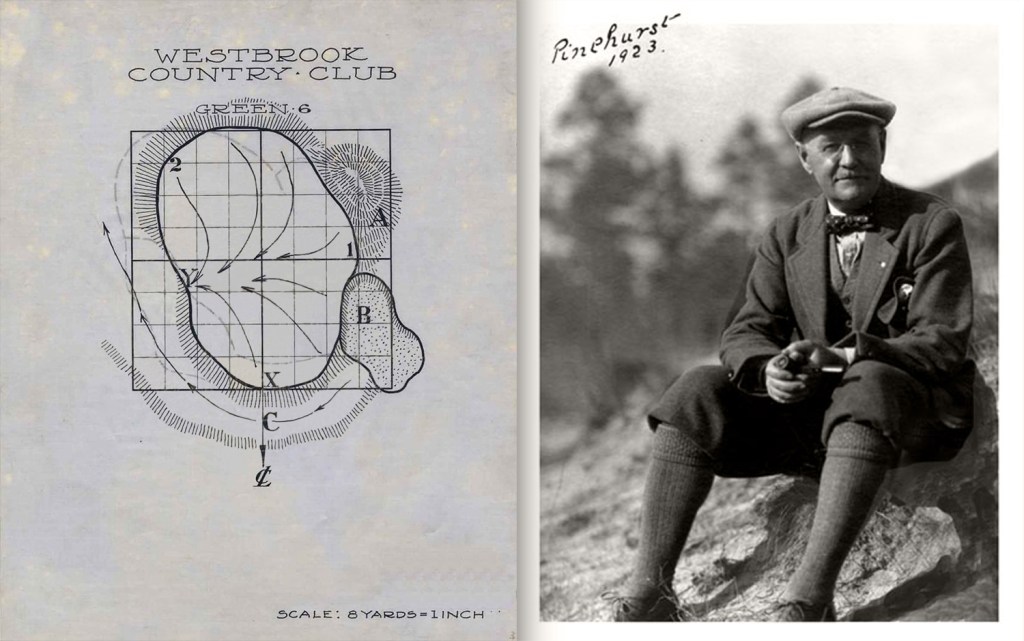
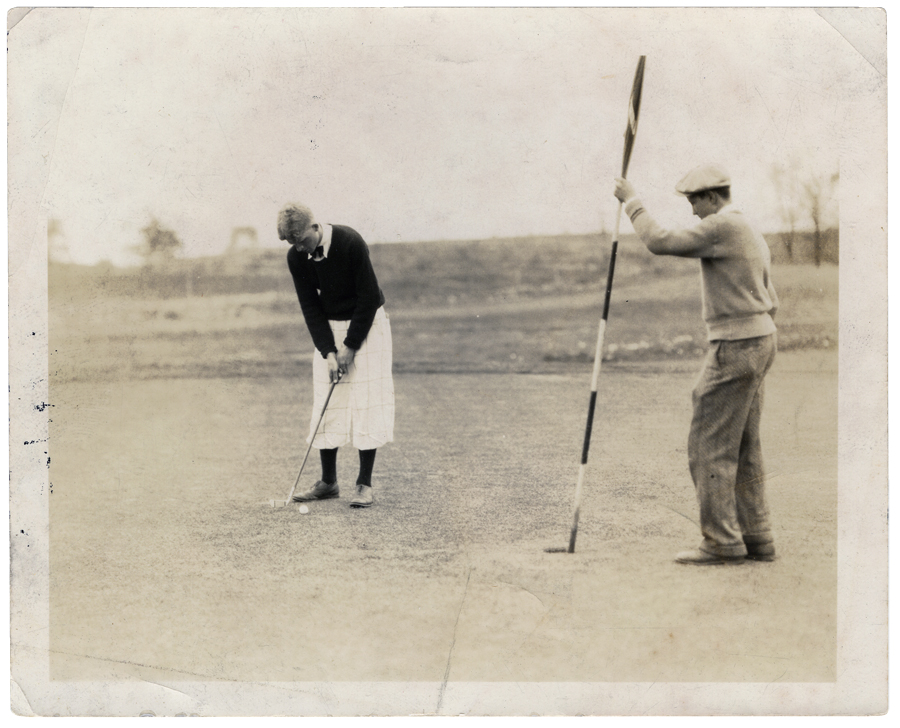
Paradise
In the 1920s and ’30s, as the Scottish landscape matured at Westbrook, the little mountain rising above the surrounding countryside was a paradise set aside from the city. The word ‘paradise’ evolved from several languages that all indicate it to be an ‘enclosed park.’ Before the 1940s, the place wasn’t enclosed at all—it was surrounded by farms and flowed quite naturally into its idyllic surroundings.
The farms surrounding Westbrook became available in the 1940s and were offered to the Club for $10,000 but the golfers thought that price was a little steep. Fifteen years later, after the land was developed into neighborhoods of steel workers’ houses—known in Mansfield as Little Kentucky—Westbrook spent nearly $30,000 to put up a chain link fence around the grounds.
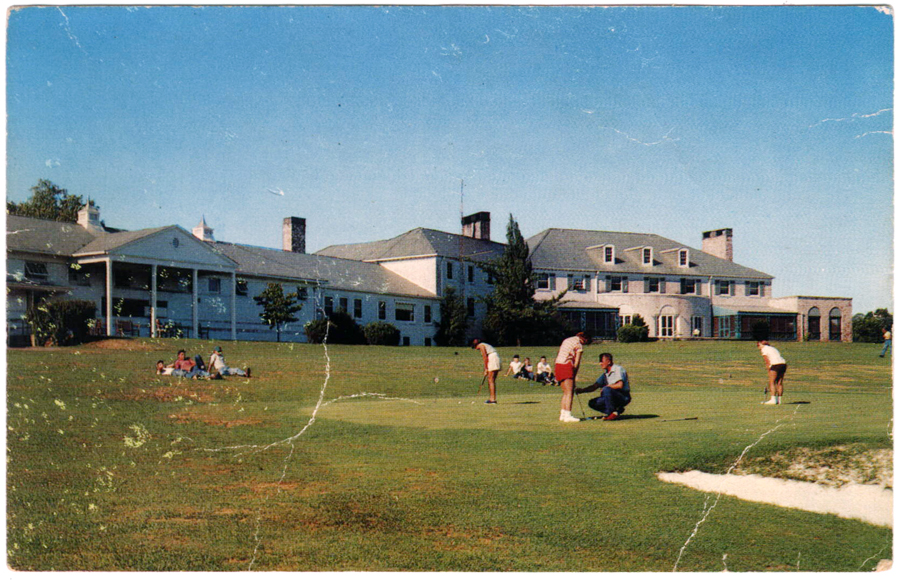
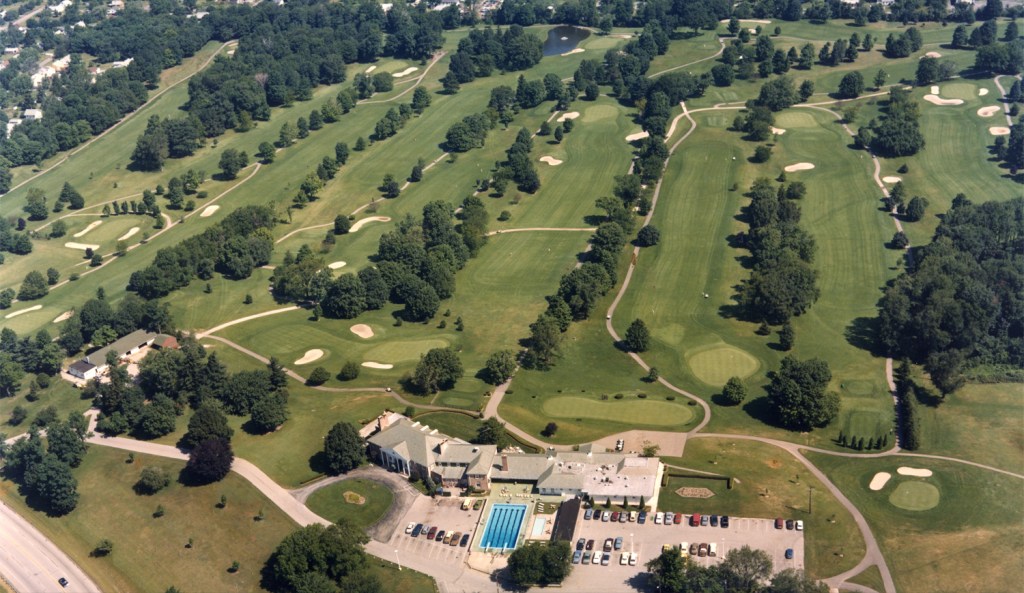
Green and Fair
When you go there today you won’t see the classic old clubhouse that Donald Ross saw in the 1920s—that one caught fire in the ’40s and was replaced with a Southern Plantation manor. The grounds, however, are exactly as he imagined them to be. With 90 years of careful tending, the fairways and greens of the Scottish landscape have been polished to the quality of a rare jewel: a diamond no longer in the rough.
Post Script
Seen so many pictures, postcards, portraits of the lovely old Westbrook Country Club I feel like I knew the place even though it burned more than a decade before I was born, but this is the first time I’ve ever been invited inside. Helen Keating took pictures for her scrapbook in 1919:
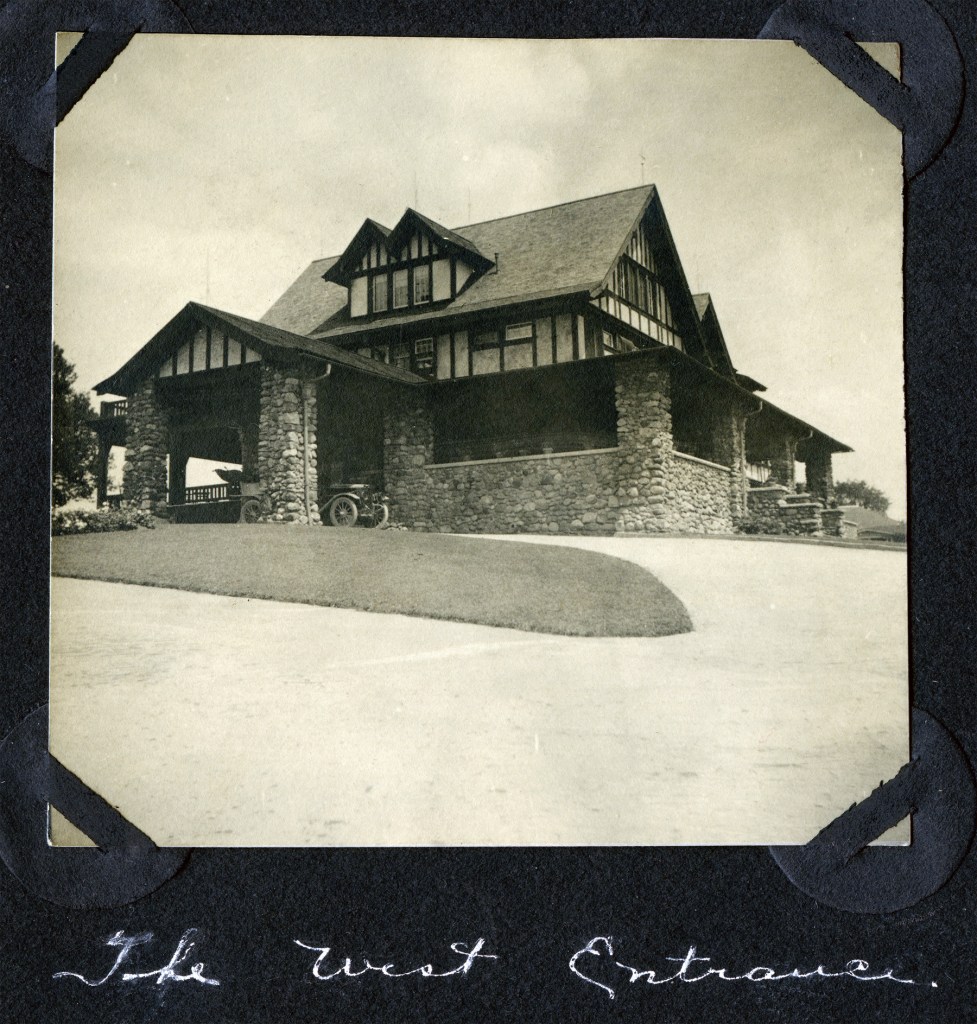


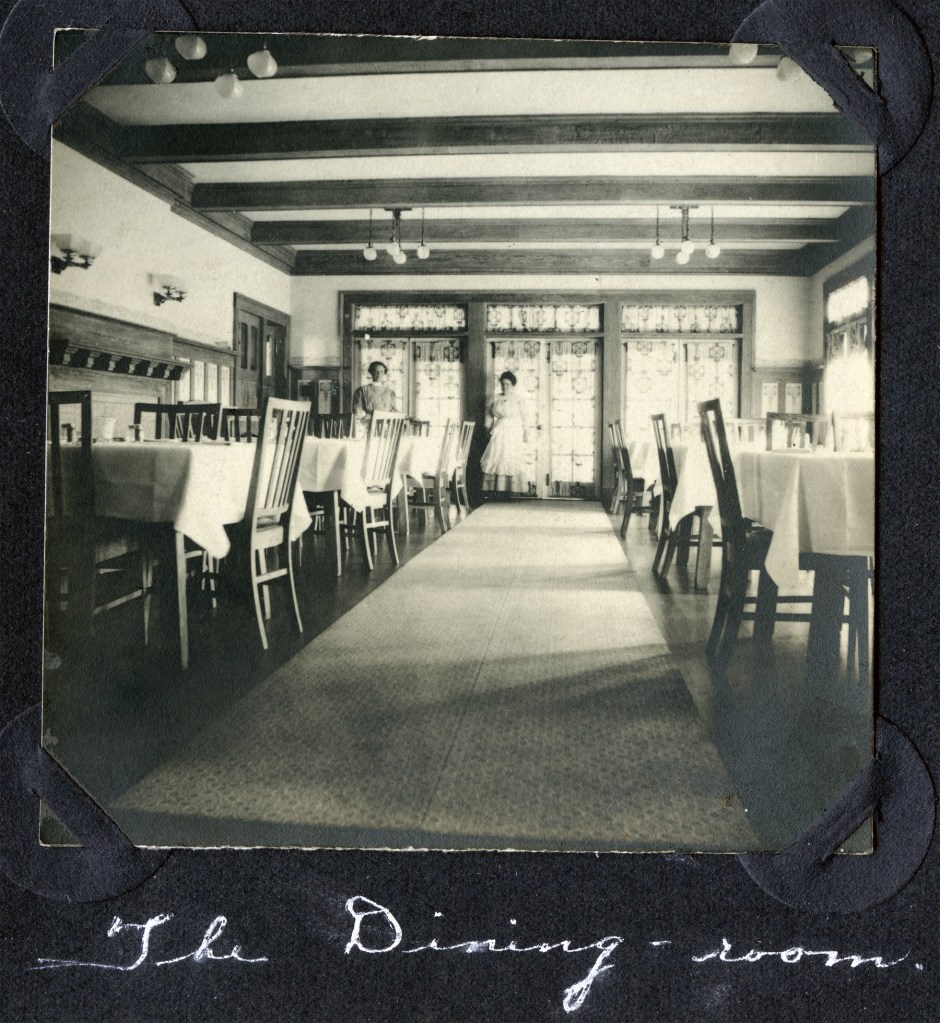

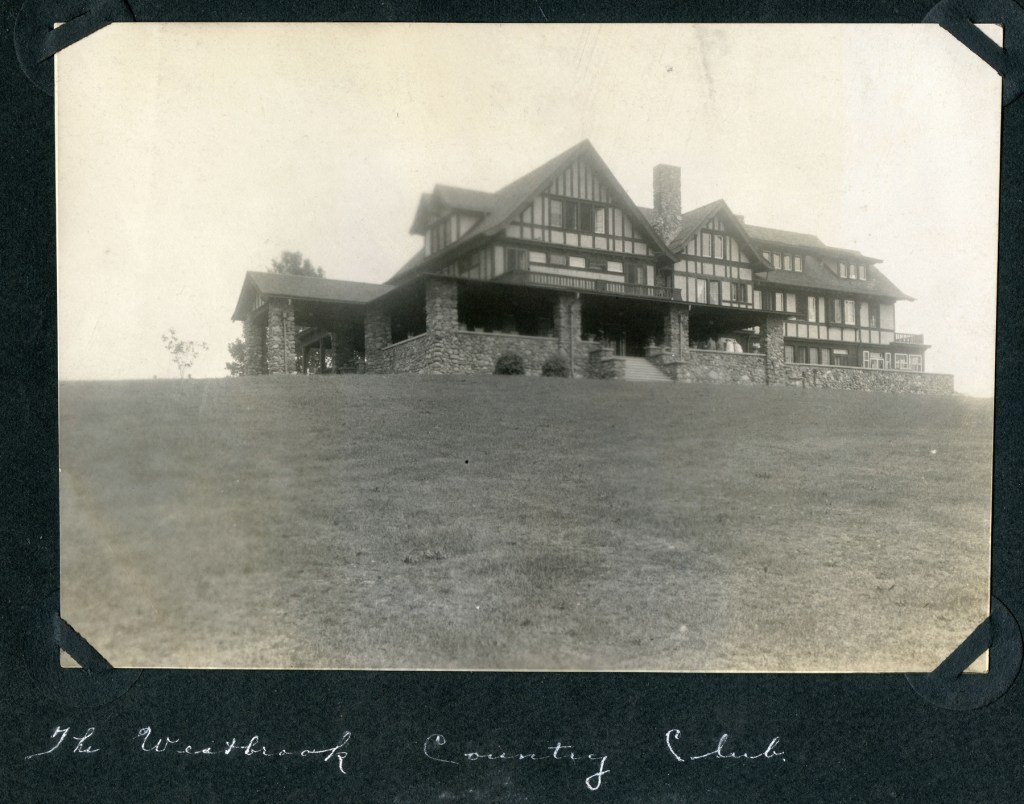
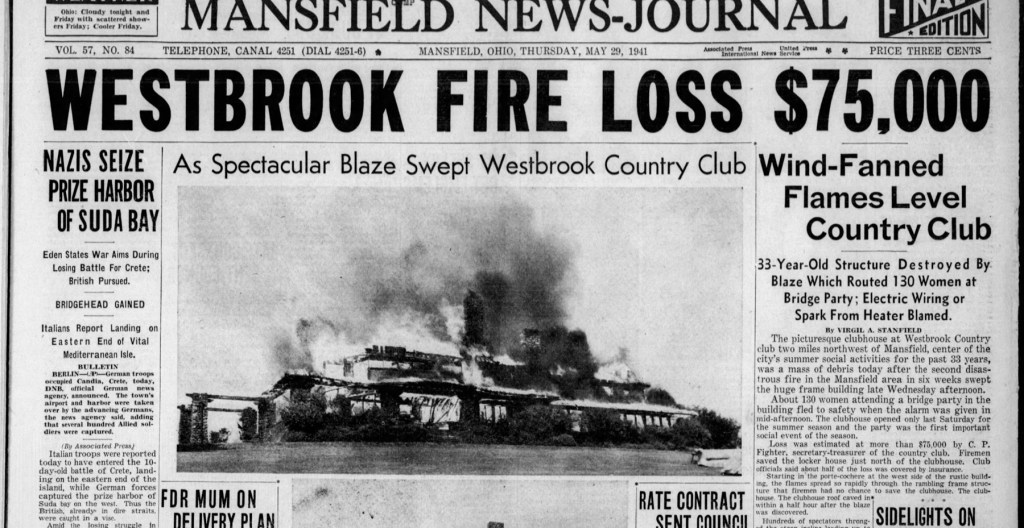
Post Post Script:
